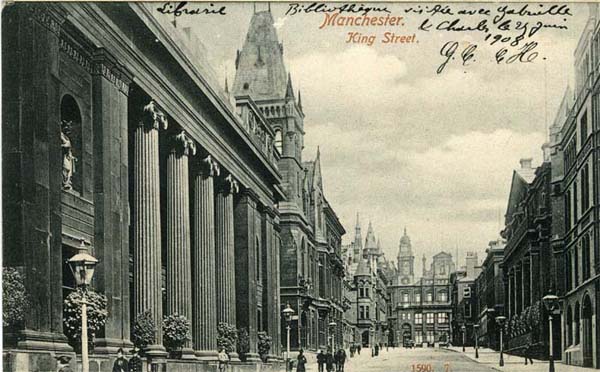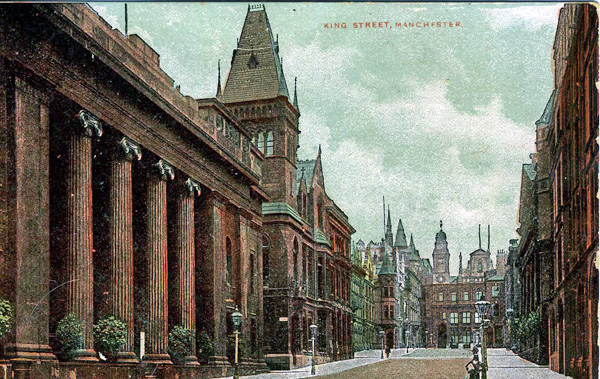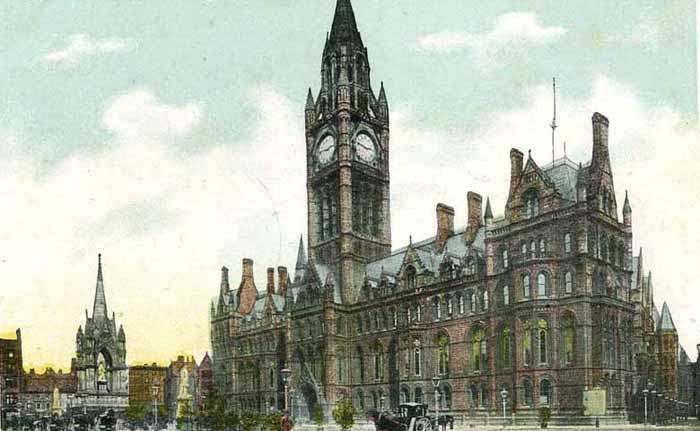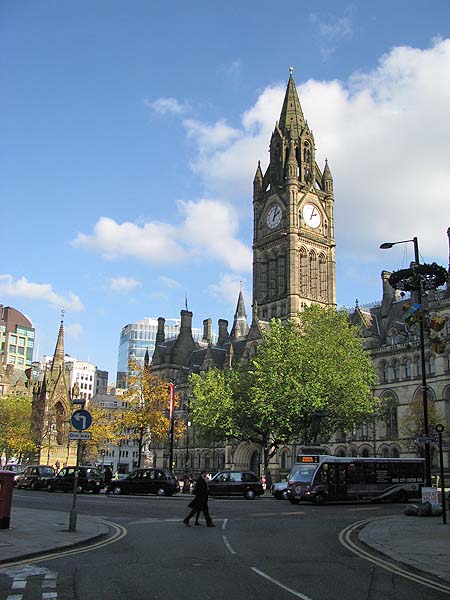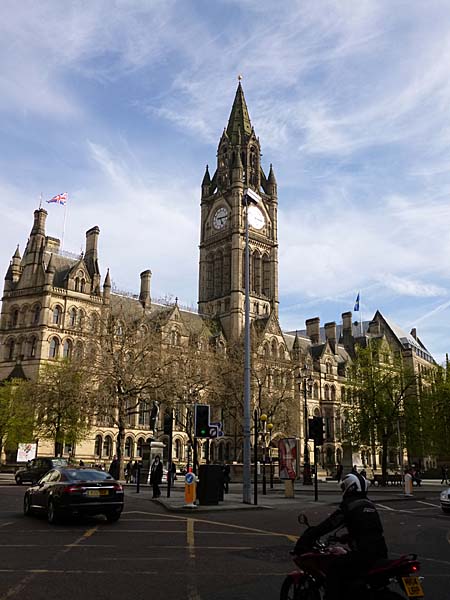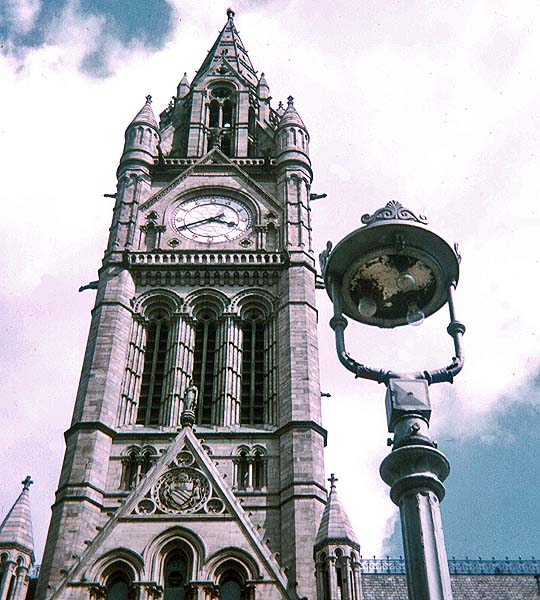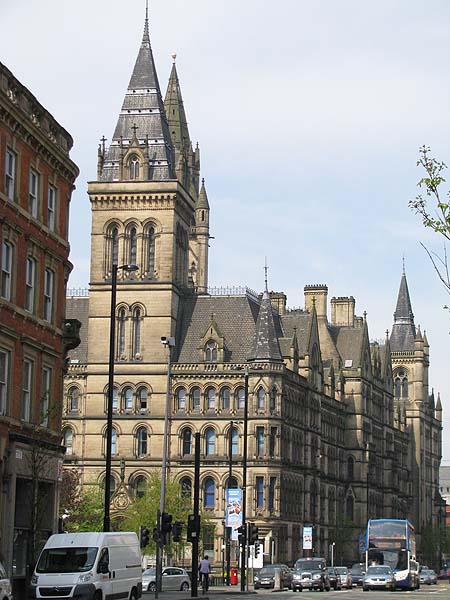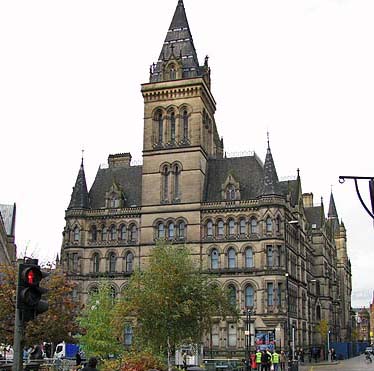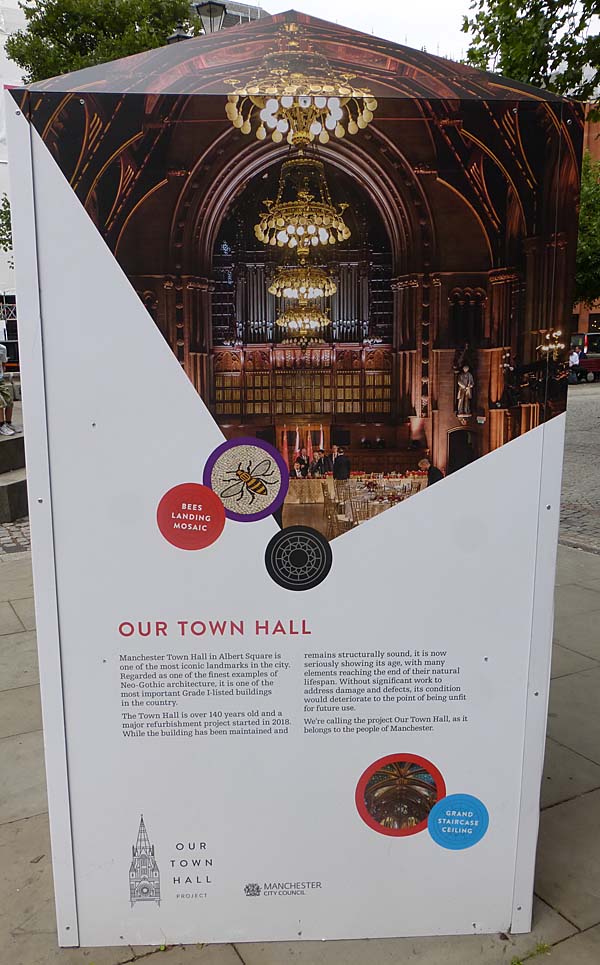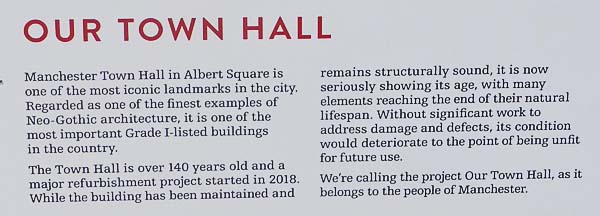|
Town
Hall
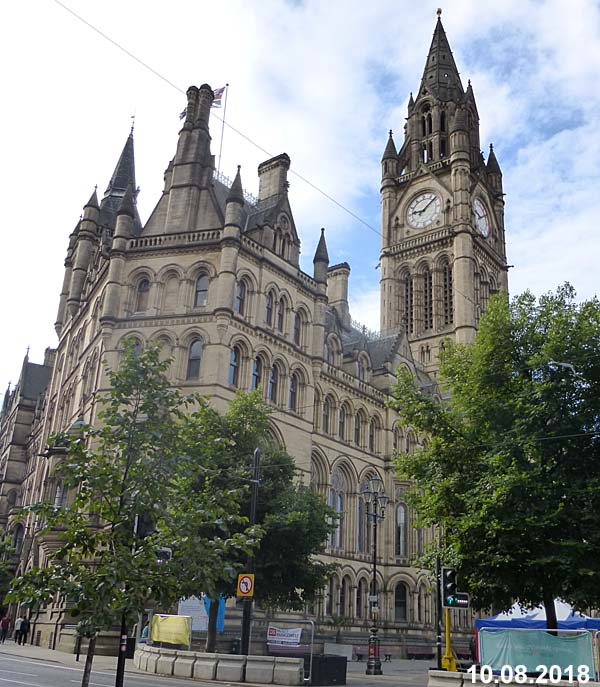 The Manchester Town Hall stands in all its gothic splendour in Albert Square.  The original Manchester Town Hall was located in King Street at the corner of Cross Street.  It was designed in the Grecian style by Francis
Goodwin between 1822–25. As the city grew the
building became unsuitable for the demands made upon
it.
In 1877, it was replaced
by the present Victorian gothic masterpiece designed
by Alfred Waterhouse.
It opened officially on 13 September, 1877. The old
Town Hall was used as lending library and then as
Lloyd's Bank. In 1912 the buildng was demolsihed
and replaced by the current Lloyd's TSB building and
the facade of the old building was preserved in Heaton
Park. The Manchester architect Edgar Wood was a
prime mover in the campaign to save the facade.
The new Town Hall was
built in the shape of a hollow triangle with the front
on Albert Square and Princess Street and Cooper Street
forming the other two sides. In the centre Waterhouse
placed the Great Hall running perpendicular to the
Albert Square side.
The central feature of the Albert Square side is the
280 foot high clock tower. The clock mechanism inside
the tower was started on New Year's Day 1879.
Inscribed on the three clock faces it reads "Teach us
to number our Days". The tower contains 24 bells. The
8 ton Great Hour Bell is called Great Abel after Abel
Heywood, the Mayor at the time of the official
opening. 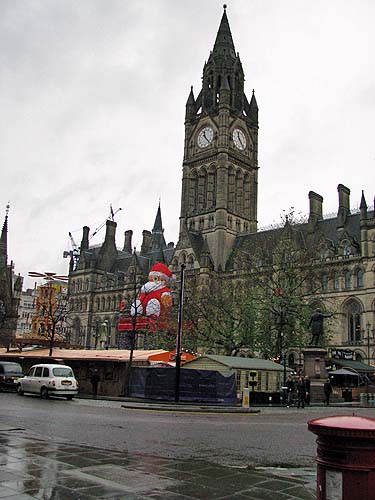 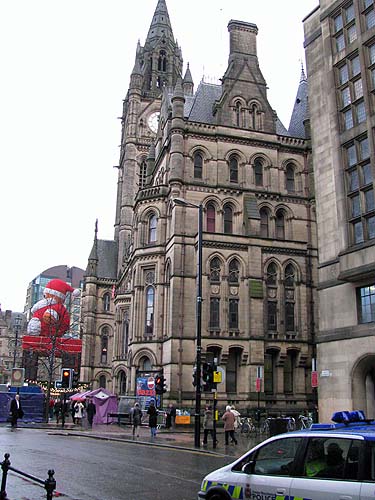 Within the Great
Hall of the Town Hall is a mural by Ford Madox
Brown. There are 12 panels, 6 on each side and each
10ft 6in by 4 ft 9in. Brown started painting them in
July 1878 and he finished them just before his death
in 1893.
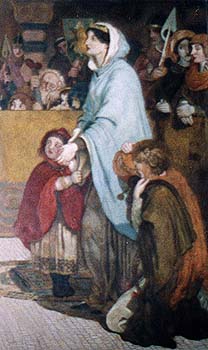
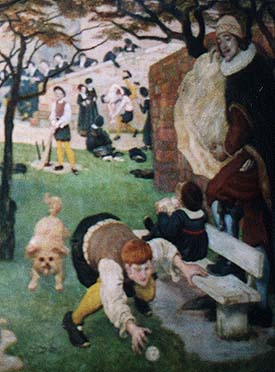 |
